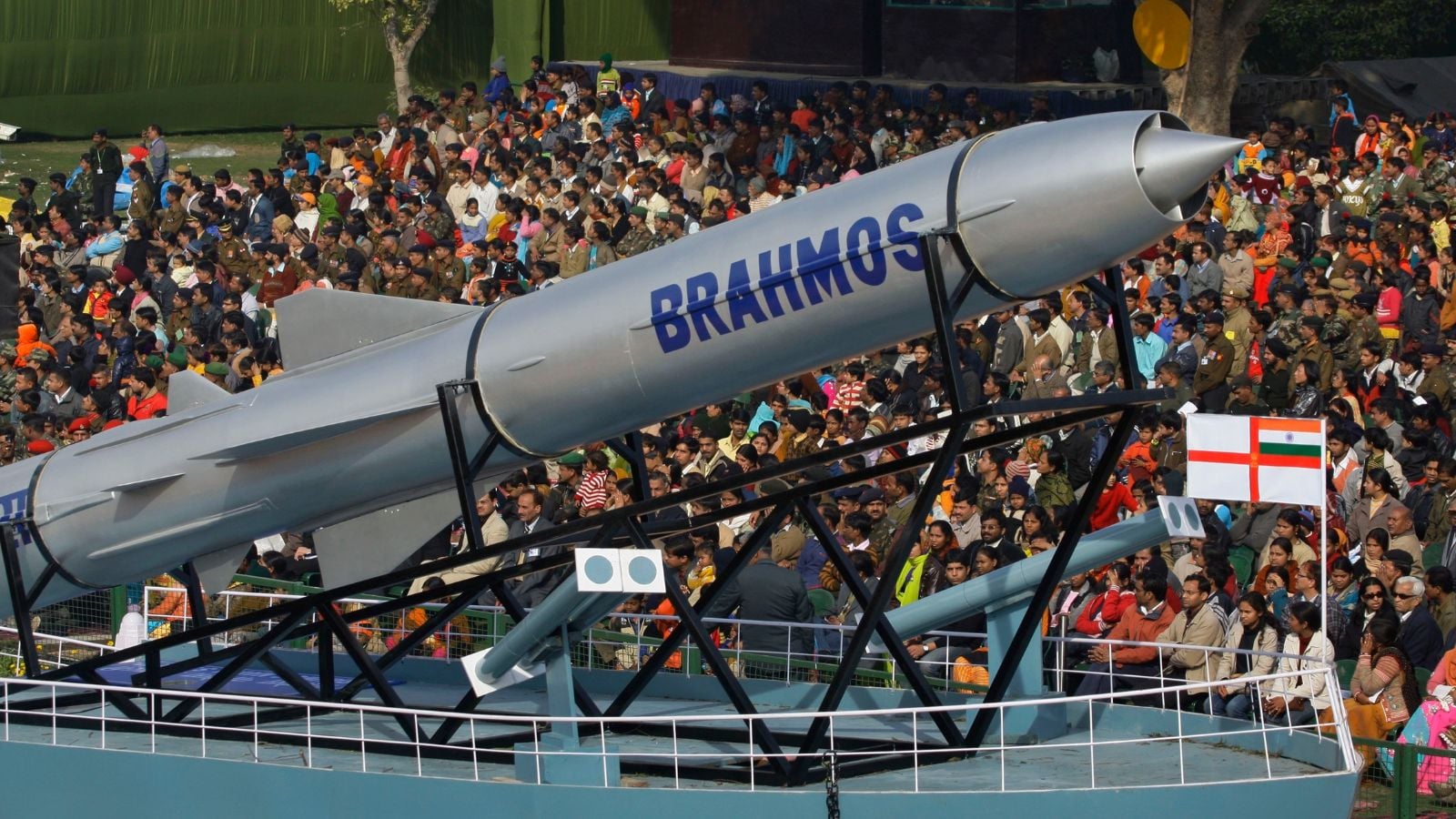ARTICLE AD BOX
Last Updated:August 14, 2025, 16:44 IST
For years, successive governments failed to provide the most basic necessities to Indians who needed them the most. That is now fast changing.

With a staggering outlay of Rs 3.6 lakh crore, this flagship initiative reflects PM Modi’s unwavering commitment to uplifting India’s poorest villages. (PTI File)
77 years is a long time for a nation. It has been especially long for the crores of Indians who were kept deprived of basic necessities – without which the sustenance of life can be excruciating, if not impossible. Whether it be the absence of toilets in households, the lack of electricity connections and cooking gas, or the fact that crores of Indians did not have access to safe tap water for decades on end – lack of government intervention on all these fronts remained a blot on our nation’s conscience. For years, successive governments failed to provide the most basic necessities to Indians who needed them the most. That is now fast changing.
One of the most remarkable initiatives over the past few years has been the Jal Jeevan Mission, taking clean water to crores of households across the country.
HAR GHAR JAL: CHANGING LIVES IN RURAL INDIA
With a budgetary outlay of 3.6 lakh crore rupees, the Har Ghar Jal mission is transformative in its impact and ambitious in its goals. This mission aims to provide tapped water connections to every rural household in India soon. Here are some fascinating numbers relating to Modi government’s the Har Ghar Jal mission.
Of India’s 19.3 crore rural households, only 3.2 crore had tap water connections in August 2019. This means India had a tap coverage of just about 17% prior to the launch of the Har Ghar Initiative.

As of December 2024, over 15.4 crore households, or about 79.5% of the targeted households, have been provided with water connections.

News18 had earlier reported how under the Har Ghar Jal initiative, India is installing one new water tap connection for rural households every second!
India had surpassed last year’s record of tap installation within the first eight months of this year alone. A total of 2.16 new tap water connections were installed until August this year, compared to the 2.08 crore installed in the entirety of 2022.

Since the launch of the mission in August 2019, around 12.11 to 12.33 crore additional rural households have been provided with tap water connections, bringing the total from 3.23 crore to over 15.4 crore households.

As of December 2024, 101 districts, 869 blocks, 78,291 panchayats, and 1,50,190 villages are ‘Har Ghar Jal’ certified, meaning all households in these administrative units have access to tap water connections.

The Har Ghar Jal Initiative is also proving to be a boon for crores of Indians – as it is saving them from a host of health risks. According to the government, in 2019, there were 14,020 habitations across 6 states that were affected or contaminated by arsenic. As of July 2023, that number saw a drastic reduction to just about 460 habitations across 3 states.

According to a World Health Organisation report, ensuring safe drinking water for all households in the country could avert nearly 400,000 diarrhoeal disease deaths. There is more. With universal coverage of safely managed drinking water in India, almost 14 million Disability Adjusted Life Years from diarrhoeal disease are estimated to be averted, resulting in estimated cost savings of up to $101 billion.
An often-overlooked aspect of the Har Ghar Jal initiative is how it is transforming the lives of women in rural India. Traditionally, the responsibility of fetching water in most rural Indian households fell on the shoulders of women – who had to often transverse significant distances for nominal volumes of water. This task would occupy a major part of their day. Today, with water tap connections fast spreading across the length and breadth of India, women no longer need to undertake arduous journeys – especially in the scorching heat of summer months.
Remember, this is happening in a country where successive governments failed to provide something as basic as a water connection to crores of households. Such was the institutional apathy towards Indians’ most rudimentary requirements, that most people had lost hope – and almost normalised living in substandard conditions. No concrete homes, no toilets, no electricity, no cooking gas and no water – this is what defined the lives of India’s underprivileged rural class until recently. Ask them how they feel about getting all of this simultaneously – in less than a decade since 2014 – and you will understand why brand ‘Modi’ remains unscathed among the most significant voter base of India.
TIME FOR GOVERNMENT TO DOUBLE DOWN ON HAR GHAR JAL MISSION
The Har Ghar Jal mission is not just about fixing taps and providing piped connections to households. The core of this initiative is, in fact, the determination to provide safe and hygienic water to all Indian households. So, to accomplish that, multi-crore water treatment plants are sprouting in almost all districts. While many believe that the government is simply laying pipes and providing tap connections in rural India, the reality is that the Har Ghar Jal initiative, along with its parent Jal Jeevan Mission is setting up intricate water storage and supply infrastructure in nearly every district of the country.
Water quality remains a critical challenge, with India’s Annual Groundwater Quality Report 2024 revealing that almost 20% of groundwater samples exceeded the permissible limit for nitrate, while 9.04% of samples had fluoride levels above safe limits. Arsenic contamination was found in 3.35% of samples across India, particularly affecting states like West Bengal, Bihar, Uttar Pradesh, and Assam.
To address these quality concerns, the government has established 2,810 water quality testing laboratories across the country, including 2,184 institutional labs and 626 water treatment plant-located labs. Over 24.8 lakh women have been trained across 5.07 lakh villages for testing water samples using Field Testing Kits (FTK).
A survey by LocalCircles earlier showed that the number of Indians who believe that the quality of tap water they receive from municipal bodies is improving has gone up in recent years. 44% of the respondents said that their tap water is good or higher, up from 35% last year.
But the entire chain of water supply is still in need of significant upgradation. For example, the same survey found that even though the quality of water produced at filtration plants may be top-class, it deteriorates as it travels through the trunk mains to service reservoirs. 14% of respondents still rated piped water supplied to their homes as “poor" or “very poor." Only 3% of respondents said that they do not need to purify tap water before drinking it. A majority of them – nearly 72% – purify tapped water with some sort of water purifier. Now while purifying water at a household level is a good practise, there still remains a lot to be desired from the supply end in terms of cleanliness, safety and hygiene.
So, one of the biggest challenges for the government is to ensure that the water being supplied is actually safe for drinking. For that, it must ensure the upgradation and constant upkeep of water storage and supply facilities at the district level.
The mission has faced significant implementation challenges, missing its original December 2024 deadline. Four states – West Bengal, Rajasthan, Kerala, and Jharkhand – are facing substantial delays, with about 46% of households in each of these states yet to receive access to clean drinking water. As a result, the government has extended the Jal Jeevan Mission until 2028 with an enhanced budget allocation of Rs 67,000 crore for 2025-26, representing a 195% increase over the revised estimates of Rs 22,694 crore for 2024-25.
Despite these challenges, the lengths to which the Har Ghar Jal initiative has gone in taking piped water connections to households is incredible. Water is a basic necessity required to uplift the most underprivileged and marginalised of communities in rural India. As India gears up to celebrate the 8th edition of the National Water Week in November, it would be a good opportunity to highlight the achievements of the Har Ghar Jal initiative, while also deliberating on the challenges that exist and ways to overcome them.

Sanbeer Singh Ranhotra is a producer and video journalist at Network18. He is enthusiastic about and writes on both national affairs as well as geopolitics.
Sanbeer Singh Ranhotra is a producer and video journalist at Network18. He is enthusiastic about and writes on both national affairs as well as geopolitics.
- Location :
- First Published:
August 14, 2025, 16:42 IST
News india From 17% To 80% Coverage: The Journey Of Jal Jeevan Mission In Rural India
Disclaimer: Comments reflect users’ views, not News18’s. Please keep discussions respectful and constructive. Abusive, defamatory, or illegal comments will be removed. News18 may disable any comment at its discretion. By posting, you agree to our Terms of Use and Privacy Policy.
Read More



.png)
.png)
.png)
















 3 days ago
7
3 days ago
7







 English (US) ·
English (US) ·